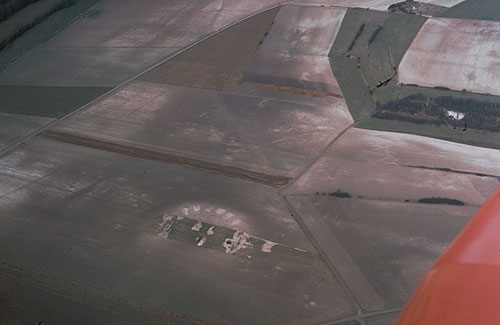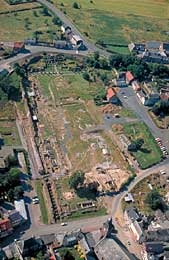- Home
- Discoveries
- The Middle Ages and the birth of the rural world
- Cities and town
The north of France was greatly affected by the destruction of the late third century. Certain cities had a difficult time building back up from their ruins, and survived only in a diminished form. In the case of Amiens, where archaeological research was particularly well carried out, the amphitheater was transformed into a fortress on which ramparts were built.
At Boulogne-sur-Mer (Pas-de-Calais), like at Senlis (Oise), the line of the ramparts can be seen from the air, but most of the time, only excavation can precisely located them. Exceptionally, large monuments still appeared and were often developed, like the arena at Senlis, the theater at Lillebonne (Seine-Maritime), and the small castrum at Noyon (Oise). Generally, modern cities are built over structures from Antiquity and from the Early Middle Ages. The city of Thérouanne (Pas-de-Calais) is an exception, because it was entirely razed and dismantled by Charles Quint.
Palaces and abbeys
In the same way, the very first celebrated abbeys such as Corbie and Saint-Riquier, and the great Merovingian and Carolingian palaces are all hidden beneath cities or current structures.
Although certain palaces from the Early Middle Ages, such as Athies and Le Mesge, are not visible from the air because they are hidden by villages, this leads us to think that, even though the habitation itself is not long-lived, there is a certain permanence of large landed estates.
The baths of the Gallo-Roman villa at Vieil-Evreux (Eure) were reused after the destruction in the last quarter of the third century.
At Vendeuil-Caply (Oise), it was the theater that was transformed into a fortress.
At the time of the invasions, the town of Bavay (Nord) moved inside the perimeter of its vast forum.



